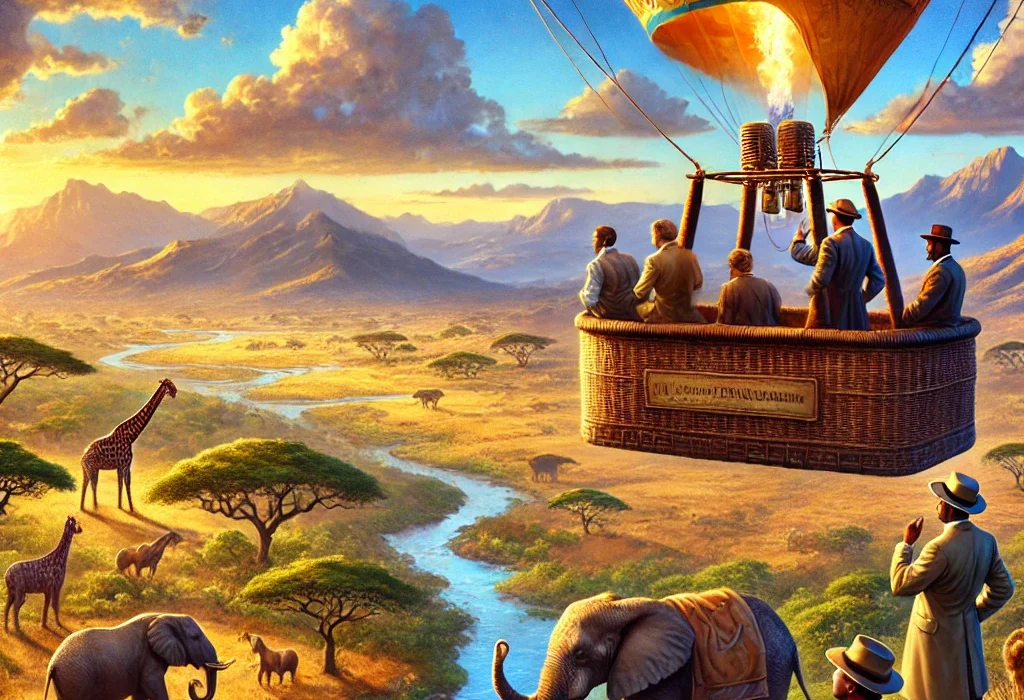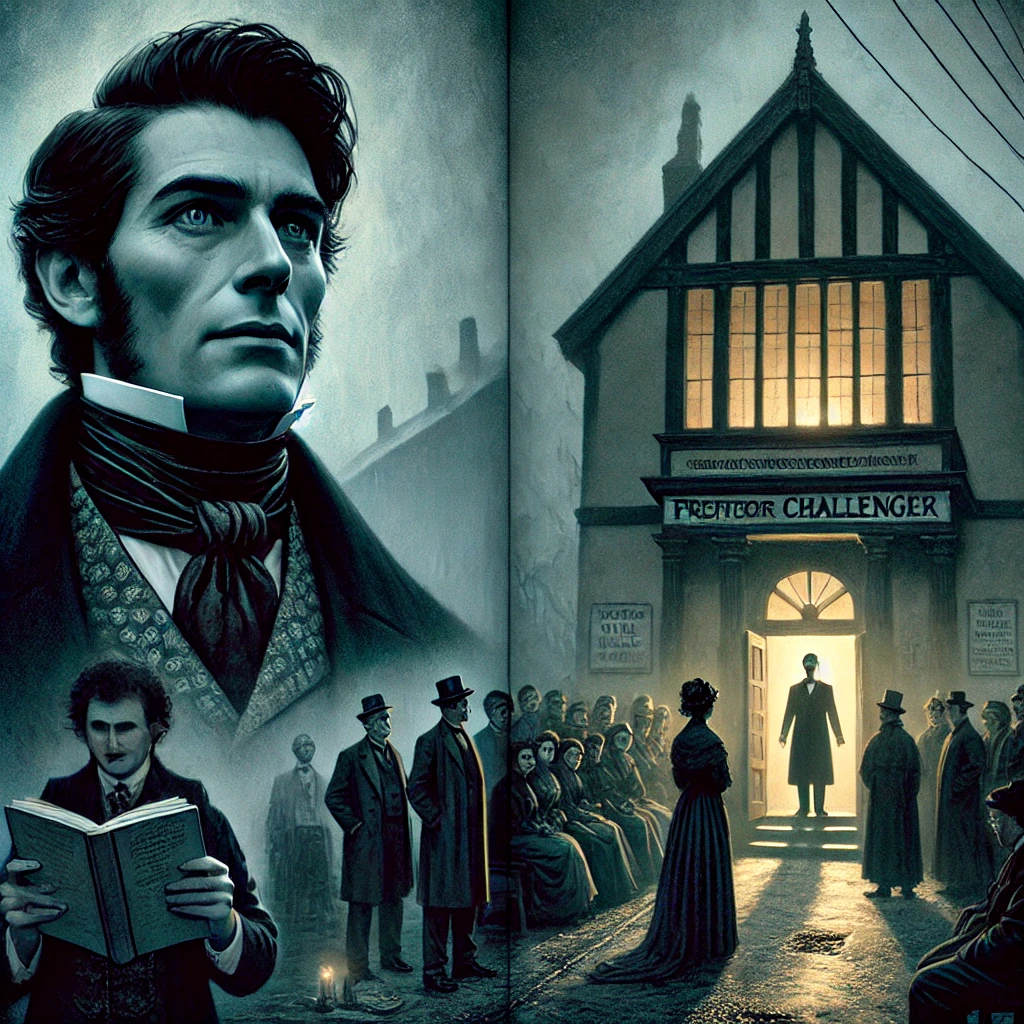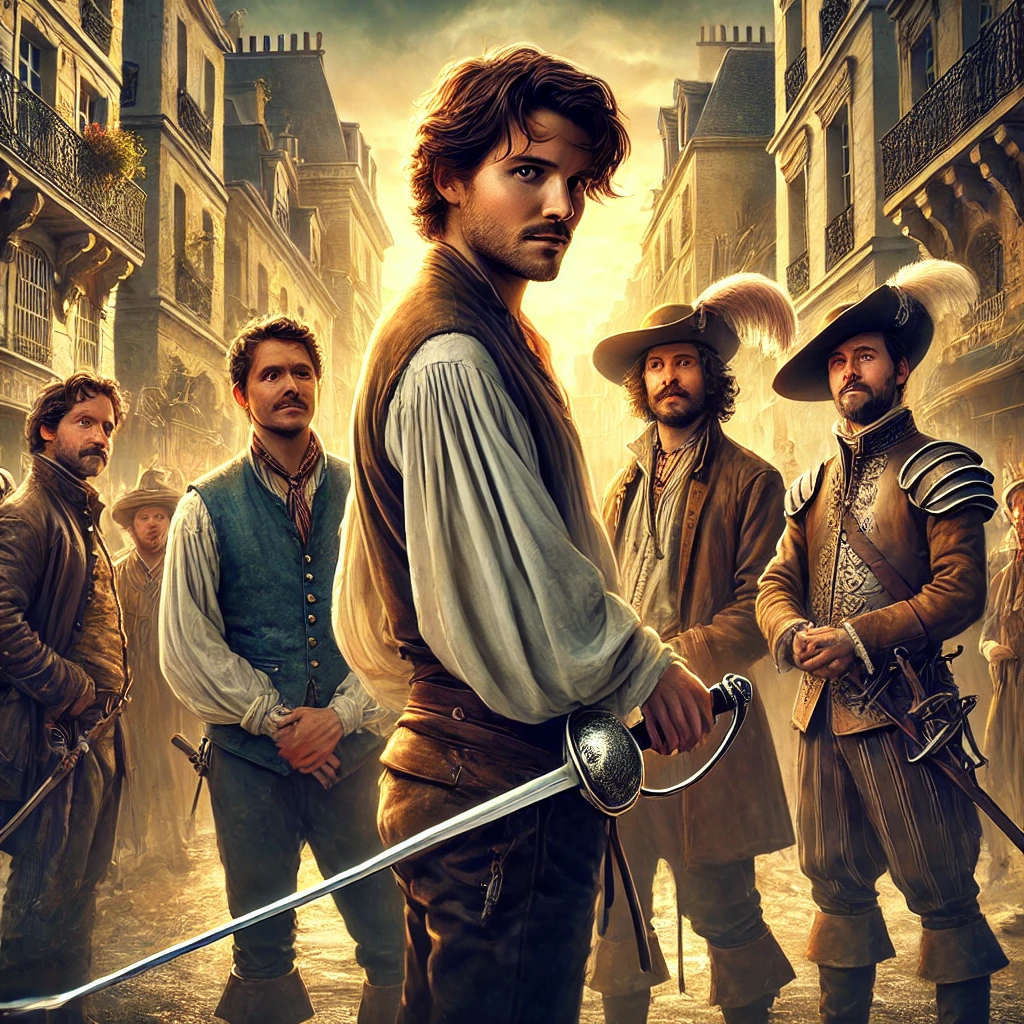Five Weeks in a Balloon is a captivating adventure novel by Jules Verne, exploring Africa’s uncharted landscapes from the sky. Published in 1869, it is a classic example of Verne’s imaginative storytelling and his scientific fascination with air travel. The story follows Dr. Samuel Ferguson, an ambitious British explorer who plans to cross Africa by hot-air balloon, aiming to fill the gaps in geographical knowledge of the African continent. This journey, full of danger and discovery, unfolds with themes of exploration, scientific courage, and human resilience.
Plot Summary
On a foggy London evening in January 1862, a distinguished crowd gathered at the Royal Geographical Society to listen to Dr. Samuel Ferguson, the celebrated explorer known for his bold exploits across uncharted lands. With calm resolve, Ferguson presented an ambitious new plan: to cross the vast, mysterious continent of Africa by balloon, linking the known territories with those yet to be mapped. The announcement stirred excitement and skepticism alike, with audiences split between astonishment and disbelief. Nonetheless, Ferguson’s confidence in his plan won over even the most doubtful, and preparations began for his extraordinary journey across Africa’s skies.
By his side were two trusted companions: Richard “Dick” Kennedy, an old friend and a burly Scotsman with a skeptical yet loyal heart, and Joe, his devoted servant, whose undying optimism and enthusiasm matched Ferguson’s ambition. Kennedy, a skilled hunter and practical man, initially resisted the idea, convinced the endeavor was madness. Yet, as Ferguson explained his calculated methods and the meticulously designed balloon, Kennedy found himself drawn in, agreeing to accompany his friend for the sake of friendship, though he remained uncertain of their success. Meanwhile, Joe’s unwavering belief in Ferguson’s capabilities kept his spirits high, ready to assist his master through any obstacle that lay ahead.
The team’s journey began from the island of Zanzibar on Africa’s eastern coast, where they launched their hydrogen-filled balloon, christened Victoria, into the air, soaring westward over uncharted landscapes. Ferguson’s balloon, designed with an innovative dual-layer structure, provided greater stability and endurance, enabling the trio to travel vast distances without compromising altitude or safety. From the start, Ferguson expertly navigated the winds, ascending and descending to avoid storms, dangerous terrains, and, at times, sweltering heat. Below them stretched an endless panorama of deserts, jungles, and savannas, interspersed with villages and the occasional caravan winding its way across the land.
Their first days in the air proved challenging yet exhilarating, with the balloon carrying them over jagged mountain ranges and plunging rivers that had deterred previous explorers. Ferguson’s keen eye and scientific precision allowed him to chart their course with remarkable accuracy, despite the unpredictable African weather. As they crossed into regions previously unvisited by Europeans, the trio faced a variety of landscapes and peoples, often learning of the local cultures and customs from a respectful distance. Occasionally, they would descend close enough to observe a village or riverbank, with Ferguson noting key geographical landmarks, updating maps, and documenting everything meticulously.
Their peaceful progress was interrupted as they entered regions marked by hostility and danger. In one village, they were greeted by a crowd of startled villagers, some of whom believed the balloon to be a supernatural being. Though Ferguson tried to convey his goodwill, panic ensued, and the villagers attacked the balloon with arrows and stones. Ferguson quickly ascended, narrowly avoiding disaster. This encounter reminded them of the risks of traversing unfamiliar lands, and Kennedy, while frustrated by the close call, admired Ferguson’s skill in maneuvering the balloon to safety.
Days later, the crew encountered a vast desert expanse, where the relentless sun beat down on the balloon and its passengers. Food and water began to dwindle as the days stretched on without signs of life below. At last, they spotted an oasis on the horizon and, with careful timing, descended to refill their water supplies and replenish their strength. The men took turns keeping watch, mindful of potential dangers in the remote wilderness. Despite these hardships, Ferguson’s morale remained unshaken, and Joe’s lighthearted humor lifted their spirits, even in the face of thirst and fatigue.
Their next adventure brought them into the region surrounding Lake Chad, a body of water rumored to lie at the center of the continent. Approaching the lake, they encountered a caravan of traders, who were equally astonished to see a balloon descend from the sky. Ferguson managed to communicate with the caravan leaders, trading a few provisions for fresh food and supplies. Though hesitant, Kennedy found himself warming to the adventure, realizing that this daring expedition held both risk and wonder. With renewed vigor, they resumed their journey, skimming low over the shimmering waters of Lake Chad, a marvel in the African landscape.
As they advanced farther west, the travelers encountered one of their greatest trials. A fierce sandstorm swept across the desert, threatening to tear the balloon from the sky. Ferguson acted quickly, adjusting the balloon’s altitude and anchoring it with weighted ballast to reduce the impact of the winds. The storm raged for hours, sand whipping across their faces and obscuring their vision. Yet Ferguson’s steadiness and Kennedy’s strength saw them through, and eventually, the storm passed, leaving them weary but unharmed. In the aftermath, they assessed the balloon for damage, relieved to find it still intact, though their supplies had taken a toll.
With their journey nearing its final leg, the trio encountered a band of hostile tribesmen, who pursued them, mistaking them for an enemy force. Ferguson made the difficult decision to release some of their precious gas reserves to gain altitude, soaring higher into the atmosphere to avoid conflict. Joe, though usually cheerful, felt the strain as their resources dwindled. Yet he remained optimistic, encouraging Ferguson and Kennedy to press on with humor and unwavering loyalty.
Finally, after five weeks of soaring across deserts, jungles, and vast lakes, Ferguson and his companions approached the western coast of Africa, their journey nearly complete. In these final moments, they shared a rare quiet, marveling at the lands they had crossed and the sights they had seen. Their arrival was met with celebration, and though their balloon was now weathered and worn, Victoria had proven to be a vessel of hope, resilience, and human ingenuity.
Through the trials of hostile encounters, nature’s fury, and the limits of endurance, Ferguson, Kennedy, and Joe had forged a bond that transcended friendship, bound together by the singular experience of their journey. Their expedition not only advanced geographical knowledge but stood as a testament to human courage and the boundless drive to explore the unknown. Dr. Ferguson’s vision had become a reality, painting a new map of Africa from the skies above.
Main Characters
- Dr. Samuel Ferguson: The protagonist, a passionate explorer with a fascination for discovery. Ferguson’s calm determination and resourceful nature drive the ambitious journey. He is fueled by a desire to contribute to the world’s knowledge of geography, even as his inventions reveal his forward-thinking and adventurous spirit.
- Richard “Dick” Kennedy: Ferguson’s skeptical Scottish friend and skilled marksman. Dick is reluctant to join the mission, seeing it as foolhardy, but ultimately supports his friend out of loyalty. His pragmatism and bravery make him an invaluable companion.
- Joe: Ferguson’s loyal servant and confidant. Joe is cheerful, optimistic, and displays unwavering faith in his master. His resourcefulness and strong devotion to Dr. Ferguson play a key role in the trio’s survival throughout the journey.
Theme
- Exploration and Curiosity: Verne examines the human drive to explore the unknown, portraying Dr. Ferguson’s journey as a symbol of humanity’s desire to discover new frontiers and push the limits of knowledge.
- Science and Innovation: Through the invention of the balloon and the careful planning of the journey, the novel highlights the spirit of scientific inquiry and innovation. It reflects Verne’s belief in science as a tool to unlock mysteries of the natural world.
- Friendship and Loyalty: The bond between Ferguson, Kennedy, and Joe emphasizes the importance of trust and companionship in the face of adversity. Their mutual support and teamwork highlight the resilience that friendship can provide.
- Colonial Perspectives on Africa: The novel reflects European views on Africa during the 19th century, focusing on its perceived mystery and danger. Though Verne aims to celebrate Africa’s landscapes and cultures, it often does so from a Western viewpoint typical of his time.
Writing Style and Tone
Verne’s writing is characterized by precise descriptions and a scientific tone that brings realism to the novel’s fantastic premise. His use of technical language in describing the mechanics of the balloon and geographical landmarks lends a sense of authenticity to the journey, enhancing the reader’s immersion. Verne’s meticulous research is evident, as he incorporates real African geography and cultural references into the plot, making the fictional journey feel grounded in reality.
In terms of tone, Verne maintains a balance between adventure and satire. He gently mocks the European hubris associated with exploration while still celebrating the adventurous spirit. This blend of awe and irony gives the narrative a unique charm, capturing the thrill of discovery with an awareness of its complexities and inherent risks. Verne’s optimistic vision of science as a liberating force, paired with his humor, makes Five Weeks in a Balloon both thrilling and thought-provoking.
We hope this summary has sparked your interest and would appreciate you following Celsius 233 on social media:
There’s a treasure trove of other fascinating book summaries waiting for you. Check out our collection of stories that inspire, thrill, and provoke thought, just like this one by checking out the Book Shelf or the Library
Remember, while our summaries capture the essence, they can never replace the full experience of reading the book. If this summary intrigued you, consider diving into the complete story – buy the book and immerse yourself in the author’s original work.
If you want to request a book summary, click here.
When Saurabh is not working/watching football/reading books/traveling, you can reach him via Twitter/X, LinkedIn, or Threads
Restart reading!








